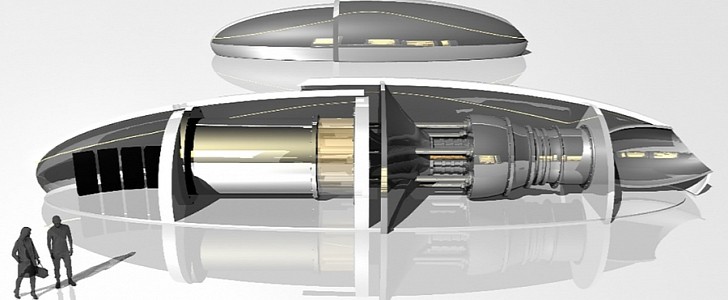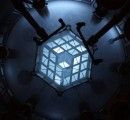When you think of nuclear energy, you’re probably picturing huge and dangerous power plants. But what if future nuclear power plants were actually so small that they could be called “nuclear batteries”, and so safe that they could be used to provide electricity and heat even for neighborhoods?
This groundbreaking concept was developed by a team of experts from different fields - Jacopo Buongiorno, TEPCO Professor of Nuclear Science and Engineering at the Massachusetts Institute of Technology (MIT), Kevin Chilton, retired commander of the U.S. Strategic Command, Steven Aumeier of the Idaho National Laboratory, and Robert Frida, a founder of GenH.
The result of their research was published in The Bridge, the journal of the National Academy of Engineering.
Nuclear energy is an important alternative for carbon-free electricity and heat, but the problem so far has been that traditional nuclear reactors were very big, requiring large construction sites, years – if not decades - to build and, of course, huge costs. The scientific community has been looking at developing smaller reactors, but it’s for the first time that a radically small unit is considered.
It would be so small that it could be built in a factory (no dedicated construction site required), it would fit in a standard container and it could be deployed on demand, in just a few weeks.
Instead of working for years on a huge power plant, these nuclear batteries could simply be transported wherever they are needed, run safely for 5 to 10 years, and then taken back to the factory, to be refueled. As Jacopo Buongiorno explains, this technology is “taking modularity to the extreme” and the reduced size is what changes everything. Thanks to it, the micro-reactors would also be as safe as possible, because it’s easier to keep the nuclear fuel cool without intervention and the amount of residual heat when the reactor is shut down is also reduced.
Institutions such as NASA and several companies have already worked with national labs to test different versions of micro-reactors. These nuclear batteries could be the next step in creating a widespread solution for sustainable energy and reducing carbon emissions.
The result of their research was published in The Bridge, the journal of the National Academy of Engineering.
Nuclear energy is an important alternative for carbon-free electricity and heat, but the problem so far has been that traditional nuclear reactors were very big, requiring large construction sites, years – if not decades - to build and, of course, huge costs. The scientific community has been looking at developing smaller reactors, but it’s for the first time that a radically small unit is considered.
It would be so small that it could be built in a factory (no dedicated construction site required), it would fit in a standard container and it could be deployed on demand, in just a few weeks.
Instead of working for years on a huge power plant, these nuclear batteries could simply be transported wherever they are needed, run safely for 5 to 10 years, and then taken back to the factory, to be refueled. As Jacopo Buongiorno explains, this technology is “taking modularity to the extreme” and the reduced size is what changes everything. Thanks to it, the micro-reactors would also be as safe as possible, because it’s easier to keep the nuclear fuel cool without intervention and the amount of residual heat when the reactor is shut down is also reduced.
Institutions such as NASA and several companies have already worked with national labs to test different versions of micro-reactors. These nuclear batteries could be the next step in creating a widespread solution for sustainable energy and reducing carbon emissions.






